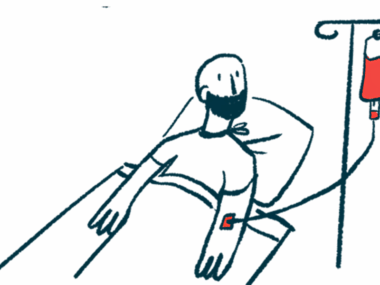3 ways I manage PTSD as someone with MG
How I work through my trauma without triggering an MG symptom flare
Written by |

Post-traumatic stress disorder (PTSD) is one of those taboo topics many people don’t seem to want to talk about. Good thing I’m not like most folks.
I have PTSD from my time in the U.S. Army as a result of combat, surviving assault, and a sprinkling of medical trauma. I believe that, with work, PTSD doesn’t have to be the end-all diagnosis I’ve seen it be for friends and colleagues.
Over the past 12 years, I’ve worked with several counselors and used exposure and cognitive behavioral therapies to slowly improve my reactions to triggering situations. The way I’ve chosen to pursue treatment and healing isn’t common because it takes a lot of work and time. It’s not an overnight cure, but for me, it’s been a sustainable one.
However, I’ve learned from experience that stress can exacerbate my myasthenia gravis (MG) symptoms. Because working through PTSD can be stressful and taxing at times, it’s been important for me to find ways to keep my stress to a minimum throughout the process.
Following are three strategies that help me work through my PTSD, regardless of its cause, without triggering an MG flare.
1. Use talk therapy when far enough removed from the event
Sometimes talk therapy can bring up a lot of heavy emotions. For me, that outcome can be counterproductive, as crying still makes me short of breath from MG-related diaphragm weakness. So I knowingly practice avoidance and emotional suppression until I can discuss the event in an objective, or at least less emotional, way. I may still cry, but I don’t sob, for example.
I use talk therapy techniques with my counselor, my husband, close friends, and sometimes complete strangers who may be in a difficult situation. It helps to know that I’m not alone in how I feel. It also helps destigmatize the idea of talking about mental health ailments.
2. Start exposure therapy in a safe environment
For this, I’ll use the example of how I worked through my reactions to fireworks. For years, fireworks reminded me of the mortars that used to rain on our compound while I was deployed to Iraq. After I returned from combat, I’d dive for cover after any sudden loud noise, including thunder, a slamming door, and fireworks.
When I was ready to begin working on this trigger, I’d sit by the window in our home, listening to music to drown out the sound of fireworks. I’d listen at a lower and lower volume until I was able to sit by the window without music. My heart would race, and I’d have to consciously remind myself I was safe.
It took a couple years, but now I simply don’t like fireworks. I no longer dive for cover or need my headphones. This strategy also incorporates cognitive behavioral therapy, as I’m consciously trying to reprogram my response to a trigger.
3. Enlist the help of those I trust
When I began working on my response to fireworks, I enlisted the help of my husband and son. In the beginning, they helped me remain calm when I started to respond in unhelpful ways. They also helped by asking if I wanted to sit by the window and work through the trigger when our neighbors shot off fireworks at night.
By telling them what I was working on and why, they were able to help keep me present. They were also able to remind me why this work was important to me on days when I wanted to give up.
My friend, retired U.S. Army Staff Sgt. Travis Mills, promotes the idea of “post-traumatic growth,” and I couldn’t agree more. Working through emotions is hard, especially when you have MG — but with a plan in place, it’s so worth it.
The better managed my PTSD is, the less stress and anxiety I have and the less I have to worry about possible MG symptom flares.
Note: Myasthenia Gravis News is strictly a news and information website about the disease. It does not provide medical advice, diagnosis, or treatment. This content is not intended to be a substitute for professional medical advice, diagnosis, or treatment. Always seek the advice of your physician or other qualified health provider with any questions you may have regarding a medical condition. Never disregard professional medical advice or delay in seeking it because of something you have read on this website. The opinions expressed in this column are not those of Myasthenia Gravis News or its parent company, Bionews, and are intended to spark discussion about issues pertaining to myasthenia gravis.







Brenda Tew
First, Thank you for your service. I am sorry for the injuries both physical and emotional you have suffered while protecting the USA. I am a care taker for my best friend who was diagnosed with MG after it tried to kill her last December. She was intubated 3 weeks then trached for another 6 weeks while recovering. We have battled all year to get this under control. Intubated again in June. After several attempts she is now in remission accept for the feeding tube that we hope will come out soon. I see you have had MG for 5 years and it gives me hope that Jodi will be able to live a somewhat normal life with the help of her friends. Thank you for sharing your story on how you are coping with PTSD. It has been a big help.
Shawna Barnes
Thank you for commenting and reading Brenda. I hope your friend finds a treatment plan that works for her. It's taken me a long time to get here; I've actually had symptoms since 2012. It just took that long to get a diagnosis. - Shawna